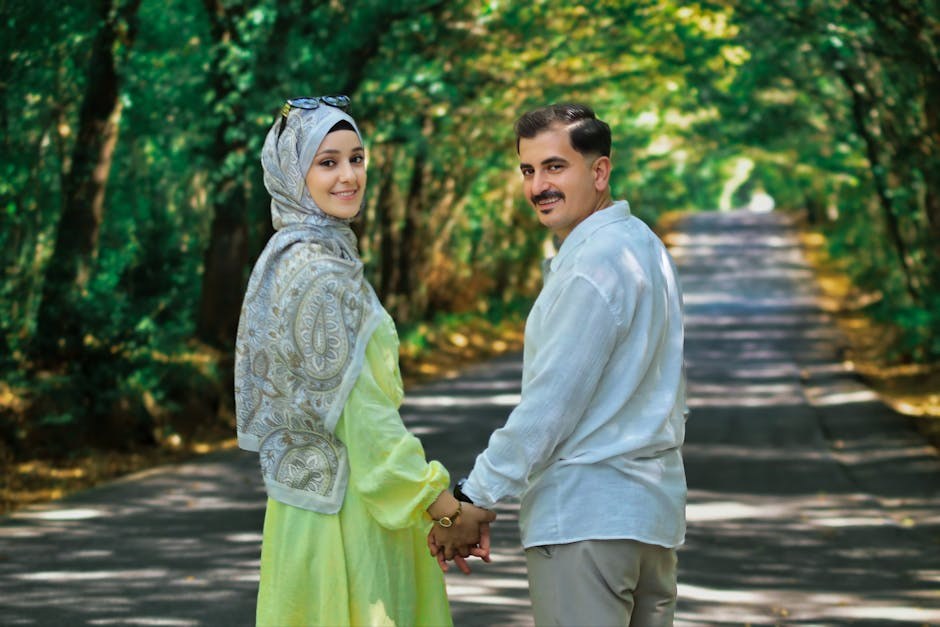People often ask a seemingly simple question – how many sexual partners is too many? The truth is more layered than a single figure can capture, and the phrase average body count can easily steal attention from what actually shapes healthy connection. Before we chase a tally, it helps to look at what the number is trying to summarize: choices, context, timing, personality, expectations, and the way two people communicate needs and boundaries. When you examine those ingredients, the average body count stops looking like a verdict and starts looking like a rough snapshot that can’t show the whole landscape.
Why a lone number rarely tells the story
Numbers can be useful – but they are not storytellers. Even the definition of an “average” shifts depending on how you measure it. The mean adds everything up and divides by the count, the median sits in the middle of a list, and the mode is simply the most frequent value. Each one describes the same pile of experiences from a different angle. If that already sounds slippery, it is. Layer real lives onto that math and the picture becomes even blurrier. Someone might have a short list of partners yet an intense history of attachments; someone else might have a longer list and an easy, secure approach to closeness. A single reference to the average body count cannot capture those textures.
Context complicates things further. People approach intimacy with different goals – exploration, romance, commitment, self-knowledge, fun, healing, or some blend of the above. Those aims change across life stages and situations. The same person may make different choices in college than later in a long-term relationship. Reduce it all to an average body count and you risk flattening a living, evolving narrative into a statistic.

What the phrase really signals
It helps to pause on the expression itself. As a term, average body count has become a shorthand in casual conversations and online debates. Shorthand is handy, but it also invites shortcuts in thinking. The phrase can sound clinical or competitive, as if intimacy were a scoreboard. When the discussion starts to feel like a ranking, curiosity and empathy tend to exit the room. Using average body count as a conversation starter – instead of a yardstick – keeps the focus where it belongs: understanding how past experiences inform present expectations and future compatibility.
Viewed that way, the number is not a confession or a credential. It’s a detail among many, like how a person handles conflict, whether they show up on time, or how they take responsibility after a misstep. None of those are captured by an average body count, yet they matter profoundly when you’re deciding if you can build trust with someone.
So, what counts as “too many”?
The better question is: “Too many for whom, and for what kind of relationship?” Thresholds are personal, shaped by values, norms, and lived experience. What feels comfortable to one person may feel unsettling to another – not because either is wrong, but because people weigh risks and meaning differently. Rather than searching for a universal cutoff, it’s more helpful to map how a couple’s preferences align. The same numerical detail can inspire curiosity or concern depending on how it’s framed, and that’s why an open discussion usually matters more than citing the average body count as proof of anything.

Key influences behind the idea of “too many”
Personal values. Some people see a large dating history as a sign of exploration and self-knowledge; others prefer a small number because it aligns with how they define commitment. Your values set the lens through which you interpret an average body count, not the other way around.
Social expectations. Messages from peers, media, and community can inflate or depress comfort with certain histories. Trends change fast – your principles shouldn’t have to keep up with a trend ticker.
Relationship goals. Casual dating and long-term partnership involve different levels of risk, care, and planning. Standards shift with the goal, which is why quoting an average body count without naming your goal can muddle the conversation.

Emotional reactions. Jealousy, insecurity, curiosity, or pride can all color how a number lands. A feeling is information – not necessarily instruction. Talking through the feeling frequently reveals that the number itself isn’t the core issue.
Upbringing and culture. Family narratives and cultural norms frame what seems sensible or excessive. Recognizing those roots helps partners treat differences as context, not character flaws.
Personal history. Past relationships shape what you expect next. For some, experience brings clarity; for others, it stirs comparison. Either way, an average body count doesn’t explain how those relationships ended or what someone learned.
Additional facets that often get overlooked
Life stage. People make choices that fit their season – exploring identity, prioritizing career, or building a family. The significance of the average body count can feel different at each stage.
Privacy boundaries. Not everyone shares the same comfort level with disclosure. Respecting boundaries about the past can foster more honesty in the present than interrogating an average body count ever could.
Definitions. What “counts” varies by person. Without shared definitions, a number can pretend to be precise while meaning different things to each partner.
When numbers overshadow connection
The pull of comparison is strong. Once a figure is named, it tempts you to stack yourself against it – the classic trap of making intimacy feel like a contest instead of a collaboration. But relationships thrive on quality of attention, not quantity of past experiences. Treating the average body count as a compass leads you in circles; treating it as a footnote keeps the compass pointed to the present.
How fixation can ripple through a relationship
Self-esteem and identity. Measuring yourself against a perceived norm can inflate or deflate your sense of worth. The result is fragile confidence – fine when the comparison is flattering, shaky when it isn’t. The average body count becomes a mirror that distorts rather than reflects.
Trust and openness. If one partner treats the number like a verdict, the other may share less. Judgment makes people hide – and secrecy can wound trust more than any past statistic.
Satisfaction and focus. Obsessing over history steals attention from daily kindness, reliability, and repair after conflict. Those are the habits that nurture satisfaction, none of which correlates neatly with an average body count.
Unhealthy comparison. Knowing a partner’s past can spark competitiveness – a tug-of-war no one can win. The antidote is curiosity: What did those experiences teach? How do they inform what you want now?
Emotional intimacy. Depth arrives through vulnerability and responsiveness. Counting partners can turn intimacy into arithmetic – a guaranteed way to drain warmth from the room.
Stigma and labels. Assigning character judgments to a number produces caricatures, not understanding. People outgrow patterns, revise beliefs, and heal – none of which appears in an average body count.
Anxiety loops. Rumination thrives on incomplete data. The mind fills gaps with worst-case stories, then treats those stories as facts. Breaking that loop requires replacing the tally with dialogue.
Inauthentic behavior. When partners feel scored, they may perform – pretending interest, withholding affection, or speeding up physical intimacy. Authentic desire rarely blooms under a scoreboard.
Honesty strain. If people expect criticism, they may round numbers up or down to avoid conflict. Ironically, the push to pin down the average body count can produce the very dishonesty that damages trust.
Future choices. Using a number as a screening tool can lead you to overlook a great fit – or to pursue someone who matches a metric but mismatches your values. Choosing with curiosity beats choosing with arithmetic.
Turning numbers into a real conversation
Healthy partners don’t ignore history – they put it in context and talk about what it means now. If you choose to discuss the average body count, set the tone first: you’re exploring compatibility, not conducting an interrogation. Then aim for clarity on the topics that actually shape the future you’re building together.
What did past experiences teach you? Lessons gleaned from earlier relationships often matter more than the count itself. Growth is the part that travels forward.
How do you define commitment? Specifics help – exclusivity, sexual health practices, communication norms, and how you both repair after a disagreement.
What are your boundaries? Clarify what you want to know and what you prefer to keep private. Boundaries protect connection; interrogation erodes it.
How do you handle jealousy or insecurity? Make a plan for tough moments – reassurance strategies, timeouts, and ways to ask for comfort without turning numbers into leverage.
What future are you picturing? Shared vision reduces the power of old statistics. When you agree on direction, yesterday’s map stops hogging the wheel.
Reframing the role of averages
An average is a snapshot – helpful in some contexts, misleading in others. Imagine trying to judge a novel by calculating the average word length. You would miss plot, character, tension, humor – the very reasons stories move us. In the same way, an average body count omits qualities that predict relationship health: kindness under stress, willingness to apologize, delight in your partner’s joy, and the patience to rebuild after a mistake.
That reframing also quiets the pressure to match a norm. There is no virtue in conforming to a number that doesn’t fit your values, just as there is no shame in a past that reflects who you were at the time. What matters now is whether two people can meet each other with honesty and care. Used this way, the conversation about the average body count becomes less about right or wrong and more about fit – a collaborative effort to understand whether your lives can weave together.
From tally to texture – practical examples
Consider three common scenarios and how they might play out when you privilege texture over tally:
Different histories, same values. One partner has dated widely, the other has not. They agree on exclusivity and respect each other’s boundaries. Instead of litigating the average body count, they invest in shared rituals, consistent presence, and honest check-ins.
Similar numbers, different expectations. Both share a comparable past, but one prefers slow pacing while the other moves fast. The number is a red herring. Alignment comes from negotiating pace and naming needs – not from citing an average body count as proof of compatibility.
Old wounds, new habits. A past betrayal left one partner wary. Rather than interrogating history, they focus on concrete trust-building: reliability, transparency about plans, and gentle reassurance. The number becomes background noise to tangible safety.
Advice without arithmetic
If counting past partners is like counting pastries you have eaten – interesting, maybe amusing – what actually feeds a relationship is the recipe you are baking now: the mix of honesty, empathy, shared meaning, and care. Let average body count be a conversation cue when needed, not a scoreboard that decides outcomes. People are not totals – they are chapters, themes, and arcs, and the book keeps being written in the present tense.
Bringing it back to the question
How many is “too many”? It depends on your values, your goals, and the quality of dialogue you can sustain together. If a figure sparks discomfort, examine the story you are telling yourself about what that number means. Then test that story in conversation – ask, listen, and clarify. You may discover that the anxiety came from uncertainty more than from the number. Or you may learn that you and your partner want different kinds of relationships. Either result is useful information, and neither requires turning the average body count into a moral scoreboard.
In short, let numbers inform without ruling. Use them to prompt thoughtful questions, not to hand down verdicts. When you do, the conversation shifts from counting to understanding, and understanding is where genuine connection has room to grow.
If you ever find yourself circling the same worries, try a small experiment. For one week, trade comparisons for curiosity – ask one open question each day about your partner’s hopes, routines, or memories. Notice how the tone changes. The space that opens up is the space where trust accumulates, and trust is the currency numbers cannot buy. That is where the average body count finally takes its proper seat – not as judge or jury, but as a footnote to a richer, ongoing story.